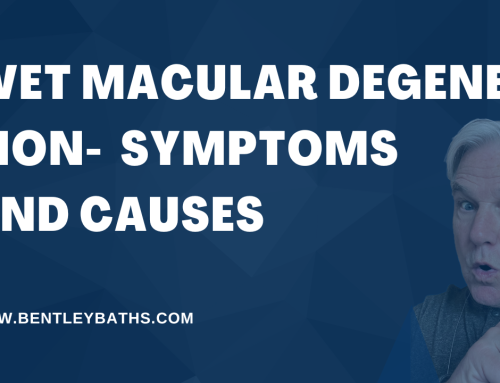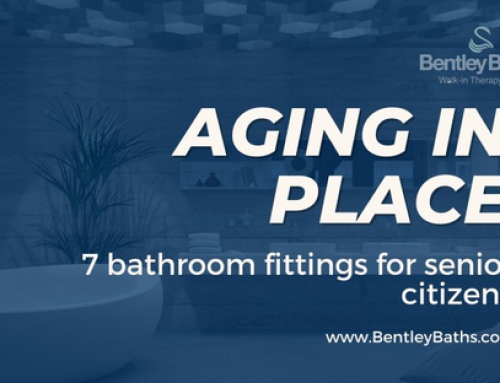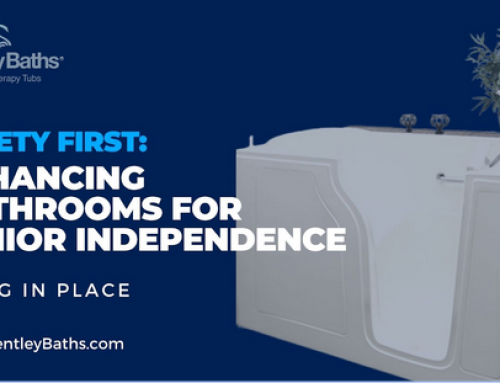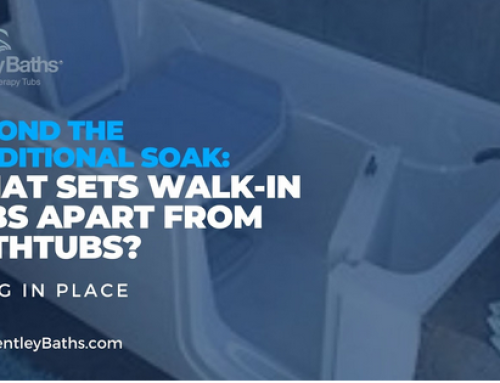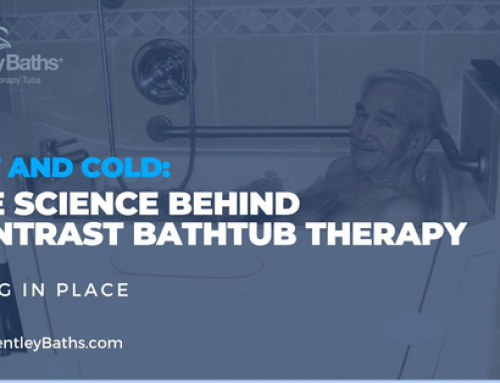In the first and second installments of this multi-part blog, I related the scope of the problems that lead to older adults falling and injuring themselves in the bathroom and detailed the first of two issues that cause these problems to go unresolved until, in many cases, it is too late. Here I discuss why older adults don’t admit they need protection in the bathroom and what can be done about it.
Epidemic #2: Denial – The Waters Flow Freely!
Denial, it ain’t no river in Egypt… but it is the leading cause of avoidable deaths and injuries!
I am convinced that one of the primary factors leading to the death and injury of millions of our seniors is a tendency toward denial. Most people that I’ve talked to—including myself (yes, I am admitting that I talk to myself)—do not openly embrace the issues that we face as we age. If I may say so, it seems to me that men, more so than women, may be inclined to deny our stability, balance, vision, hearing and other age related problems. Being in denial means having no power to do anything about them.
 In fact, with my company, Bentley Baths Walk-in Therapy Tubs, we trademarked and use the tagline “Call Before You Fall®.” This came about after two years of helping seniors modify their bathrooms and make them safe and accommodating. We displayed our walk-in bathtubs at several trade shows and fairs. I became amused and then frustrated when a senior with advanced mobility issues would hobble up on a walker, barely stable, look at our tub, comment on how wonderful and comfortable it looked, and then deliver the denial kicker: “Thank goodness I don’t need that yet!” And then they would tootle off on their walkers.
In fact, with my company, Bentley Baths Walk-in Therapy Tubs, we trademarked and use the tagline “Call Before You Fall®.” This came about after two years of helping seniors modify their bathrooms and make them safe and accommodating. We displayed our walk-in bathtubs at several trade shows and fairs. I became amused and then frustrated when a senior with advanced mobility issues would hobble up on a walker, barely stable, look at our tub, comment on how wonderful and comfortable it looked, and then deliver the denial kicker: “Thank goodness I don’t need that yet!” And then they would tootle off on their walkers.
We would look at each other with shock in our eyes and would think—well if you don’t need this safe bathing appliance, then who on earth does? The point is that if we are not willing to be honest with ourselves, and protect ourselves or our loved ones from certain dangers with “pro-aging®” measures, we are going to remain vulnerable to injury.
Our society has sent people to the moon; it is not as though we don’t have the capability to manage and cure these illnesses and dangers. I can push a few buttons and talk to my daughter in Thailand without any wires or connections whatsoever, so why would it be impossible to prevent someone from falling? But just as few people know how to build and operate a rocket ship, too few of us know about the huge technological advances that can allow us to age safely. Like my mom and dad said, “it is impossible to know what we don’t know.” Therefore, we must proactively ask questions, analyze our situations, and commit ourselves to doing something about it.
But, first, we must acknowledge that we are in need of this information. We must admit that we are powerless to stop our aging process, and acknowledge that if we don’t take action to protect ourselves…we cannot be protected! That is simply the truth.
On the other hand, once we decide to be honest with ourselves and become proactive to avoid injuries, it is amazing what we can do to improve our longevity and our quality of life.
 One of my greatest mentors and role models is Art Linkletter. Mr. Linkletter thrived to the age of 97 and was a very successful, vibrant human being. He wrote and lectured extensively on the issues relative to aging, and I’ve never forgotten his words to all seniors:
One of my greatest mentors and role models is Art Linkletter. Mr. Linkletter thrived to the age of 97 and was a very successful, vibrant human being. He wrote and lectured extensively on the issues relative to aging, and I’ve never forgotten his words to all seniors:
“If you don’t feel safe, you are not safe.”
We have to self-assess and be honest with ourselves about those activities of daily living which become dangerous as we age. As soon as we experience the first sensation of fear or insecurity, that is the time to seek additional information. That is the time to ask questions. As my mom said, the only stupid question you can ever have is one that you don’t get answered. I hope that this book will stimulate those questions for you.
Let me give you a true example of how denial and ignorance can greatly delay the time we require as a society to embrace and adopt the common use of a new life saving technology. When seatbelts were first introduced, they were not very popular. In fact, I remember my father (and many others) complaining: “Why on earth would I need to wear a belt around my lap just because I’m riding around in my pickup truck? I’ve never had one before and I’ve never needed one before.”
Well, seatbelts as a safety technology were not developed, promoted and then mandated by law to be used just to inconvenience my dad. They were designed to save his life. But we had never experienced this technology before. It was new. There was a lot of misinformation and rhetoric around this new technology when it first came out, and people were prone to cite rationalizations for not using them: “Seat belts will kill me because I’m going to get stuck in the car and I can’t get out.” “Seatbelts are a death trap – I will burn to death.” And the one I really had a hard time understanding (but heard many people express, mostly women): “seatbelts will wrinkle my clothes.”
Of course, that was several decades ago. Since then, evidence has been gathered that irrefutably proves that seatbelts save lives. I doubt you know a single person who would ever get into an automobile without putting on the seatbelt.
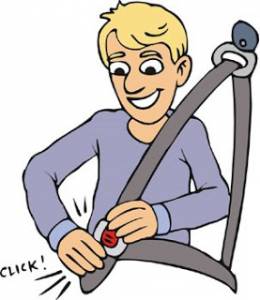 Well, here’s my point. Nobody plans to have an automobile accident. But, nowadays, we do put on our seatbelts. Always. Just in case. We always take proactive steps to protect us in the unlikely event we are in a car wreck. It is now “common sense” to wear a seat belt. Right? By analogy, no one plans to fall and injure themselves in their bathroom, and yet everyone ought to take reasonable safety precautions because the dangers are so great.
Well, here’s my point. Nobody plans to have an automobile accident. But, nowadays, we do put on our seatbelts. Always. Just in case. We always take proactive steps to protect us in the unlikely event we are in a car wreck. It is now “common sense” to wear a seat belt. Right? By analogy, no one plans to fall and injure themselves in their bathroom, and yet everyone ought to take reasonable safety precautions because the dangers are so great.
Let me put this in perspective for you. Let’s compare the annual deaths caused by all auto accidents with annual bathroom fall-related deaths for seniors.
If you truly get the significance of this next fact, you’ll call me in the morning. So, think about this…
As of 2009, there were only 30,000 auto accident related fatalities each year counting people of all ages. But, there was already a staggering 20,000 fall related fatalities counting only people over 65!
As stated earlier, the numbers relating to older Americans are going to continue to increase dramatically as Boomers age. Can it really be true that it is statistically more likely that a senior will die from a bathroom fall than from a car accident?!
And, it is highly likely that each and every one of us will fall and injure ourselves in our bathroom at some point. It is only a matter of time. Have you never slipped, fell, almost fell, stumbled or skidded in a bathroom? Of course you have, but you managed. You can be sure the risk will continue.
Assuming you are younger than 80 and not suffering mobility challenges, how do I help you empathize with what it is like to be over 80 and struggling to use a traditional bathroom? Let me try to help you get a feel for what it is like.
Take the Eighty-Five for Five Challenge
Take five minutes and give a long hard look your bathroom and the way it’s configured right now, whether it contains a bathtub or a shower or both. And now, if you are not eighty years old or older, I would like you to imagine that you are. This is a brief experiment to help you better understand what it might be like to deal with your bathroom when you are eighty-five years old. I most certainly hope that you thrive and live vibrant lives to well pass eighty-five years of age.
With that in mind, as you look into your bathroom as it exists now, try squeezing your eyes nearly closed to obscure your vision. Now imagine putting on fifteen-pound ankle weights and a thirty-pound backpack. Spin around as fast as you can five times. Now try to use the bathroom as you normally would.
Here is what you’ll experience:
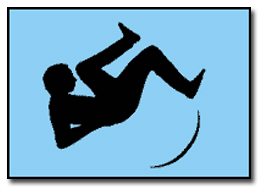 You will not be able to bathe, brush your teeth or have a bowel movement without seriously increased risk. Your balance will be off, your vision will be blurred and you won’t be able to stabilize yourself. You will be weaker than you are now. In other words, you will be stressed, and you will struggle! And you will be at serious risk of falling and injuring yourself.
You will not be able to bathe, brush your teeth or have a bowel movement without seriously increased risk. Your balance will be off, your vision will be blurred and you won’t be able to stabilize yourself. You will be weaker than you are now. In other words, you will be stressed, and you will struggle! And you will be at serious risk of falling and injuring yourself.
You have just experienced interacting with a traditional bathroom as if you were eighty-five years old, or as if you had an illness or injury related mobility issue. There are many, many conditions that we deal with in life that create greater risk of falling. These conditions decrease our stability, our sense of balance and our vision.
Here’s another quick thought process. Do you personally deal with any potentially incapacitating disabilities? How many people do you know who are? If you think not many, think again. Our medical technologies have advanced so far that we often lose sight of just how many debilitating medical conditions we manage as a part of everyday life that would otherwise impair our mobility or quality of life.
For example, do you wear glasses? Maybe just readers? Do you use pain medications, wear hearing aids, or have the benefit of modern dental work? Most people don’t think about the fact that without these readily available medical “fixes” we could otherwise be dealing with numerous potentially debilitating conditions that would greatly impact our overall quality of life.
Personally, I would be functionally disabled to a great degree without the convenience of reading glasses. I was just at lunch without my reading glasses, and I literally had to ask someone to read the menu to me. The fact that I can buy them at the drugstore and have them readily available does not mitigate the truth that I would not be able to read without them.
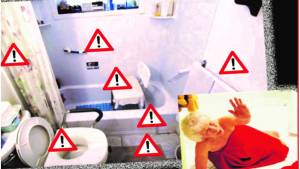 There are many, many people who could not navigate safely in a bathroom without corrective eyewear, or other assistive devices. The same is true with dental repairs, fillings and other common physical “fixes”, without which we would suffer much greater pain and “disability.” How many people function with the benefit of hearing aids, knee replacements, pacemakers, etc, etc.?
There are many, many people who could not navigate safely in a bathroom without corrective eyewear, or other assistive devices. The same is true with dental repairs, fillings and other common physical “fixes”, without which we would suffer much greater pain and “disability.” How many people function with the benefit of hearing aids, knee replacements, pacemakers, etc, etc.?
You have just experienced the interaction with a traditional bathroom as if you were eighty-five years old, however, you can go back to your current age or put your glasses back on, or drink cold drinks without pain. Our seniors live with their unique limiting circumstances all the time.
Don’t just imagine the 85 For Five exercise…DO IT! I insist.
Why? Because…once you do, it will become very obvious that when your bathroom was designed, safety and ease of use with age related conditions were not the primary considerations. You will hopefully immediately realize that you must do something to make your bathroom safer for yourself and your loved ones over sixty-five or who suffer age, weight, injury or illness-related mobility issues.
In other words…don’t make them try to read the menu without their glasses! Give them a little help. The technology is here. You now know it is only a matter of time before you (or they) fall, and hopefully, you will “Call Before You
[or They] Fall®.”
So, you tell me…as with seatbelts, do we really want to continue to make decisions from ignorance or denial when it comes to bathroom safety? Do we really want to require laws and criminal legislation to be passed imposing fines and penalties on all who refuse to make our bathrooms safer? Will we allow Killer Bathrooms to continue causing avoidable deaths, injuries and huge costs to individuals and society? Do we really want healthcare costs to skyrocket further out of control before we open our eyes, come out of denial and begin to proactively take action to make our bathrooms safer?
Lord, I certainly hope not. What do you think?
We are at a point in our evolution where we can once again reclaim our control over how we age and the vibrancy with which we live. Are you motivated?
I define “motivation” simply as “motive for action”. Can you appreciate how the experience I had with my mother was a compelling motive to take action to prevent the same outcome for my dad? The experience with my dad provided the motive to take action to start Bentley Baths. See a thread here?
Find your “why,” and you will take action.
Stay tuned for the next installment of our blog, in which I go over the primary technological solutions that are available to resolve the hazards involved in entering and exiting traditional bathtubs and showers.



